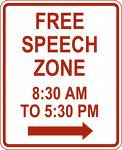JPMorgan Chase and others are shoring up balance sheets by reducing or eliminating these financial lifelines to entrepreneurs
By Amy Barrett
For small business owners, a line of credit can be a lifesaver, giving them a buffer against cash-flow problems and enabling them to handle regular expenses such as payroll. But beginning in March, according to documents obtained by BusinessWeek, JPMorgan Chase (JPM) suspended credit lines for a large number of business owners. According to someone familiar with the matter, the move affected thousands of businesses. They had been clients of Washington Mutual before Chase bought the ailing bank in September 2008. The documents show that Chase tasked a special group inside the bank with responding to inquiries from borrowers.
The bank can expect plenty of those, at least partly because in many cases the businesses whose lines were cut had not missed loan payments. Instead, their credit score or their financials had deteriorated, and credit-line agreements typically give banks the right to change the terms of the line if there is a change in the borrower's financial situation. In this case, the changes in the terms are dramatic. If business owners can't convince Chase of their creditworthiness, they have three options: 1) pay off the balance in full; 2) agree to a conversion of the line of credit into a term loan; or 3) go into default.
Business owners who accept the conversion to a term loan will likely see dramatically higher monthly payments. A business owner may be able to keep a line of credit open with interest-only payments, but term loans typically have to be paid off—interest and principal—within three to five years. Plus, they may carry higher interest rates.
Aggressive Review
Thomas Kelly, a spokesman for Chase, says the bank continually reviews the lines of credit in its portfolio. "We contact customers if we determine there has been an adverse change in their financial condition or credit history. We may eliminate the unused portion of their credit line and set up a standard repayment plan." Kelly says the bank encourages customers to contact Chase if they want the decision reevaluated or if they want to provide information such as their federal tax return. And he says the bank has assigned staff to work with customers who want such decisions reexamined.
Donald Raftery, managing director at Greenwich Associates, a Stamford (Conn.)-based financial-services consulting firm, says the banks, overwhelmed with problem loans, are "trying to take a very active approach on a broad segment of companies. There's no individual type of approach. [Small companies] feel like they're being treated like a number."
Mark Fitchett, the owner of $300,000 music school operator L&M Music in Long Beach, Calif., would certainly agree. He had been a Washington Mutual customer before the bank was acquired by Chase. He had four overdraft lines of credit of $10,000 each, one for each of his schools and one for the parent company, and has been drawing on them at the beginning of each month to help pay the music instructors that contract with his company. In late April, Fitchett was checking his account online and noticed that two of the lines were not showing up. That day a letter arrived saying that, due to an adverse change in his "financial condition and/or credit history," Chase was blocking him from drawing on those two lines. Fitchett said he called Chase, but still doesn't understand what change prompted the move. He's trying to get the lines reinstated, but he's also shopping around for a new line. "I'm thinking now about how I'm going to cover the first week [of paychecks] next month," Fitchett says.
Broader Phenomenon
The phenomenon may extend well beyond Chase and its borrowers. "I'm hearing it more and more," says Stacey Sanchez, senior community loan officer with San Diego-based CDC Small Business Finance, a community development corporation, who says entrepreneurs often turn to her institution when their credit lines are pulled. Sanchez says the increased aggressiveness on the part of lenders may be due in part to banks now being in possession of 2008 tax returns for most of their clients, which show the full ugliness of the last quarter of 2008.
And suspending lines of credit is certainly an efficient way to reduce the risk on a bank's balance sheet. According to officials at the Office of the Comptroller of the Currency, bank reserves for bad loans are based on the total exposure to a customer. So if a bank has a $100,000 line of credit with a small firm and only $20,000 is drawn down, the total exposure is still $100,000, and the bank usually will reserve for loan losses based on that amount. But if they convert the $20,000 outstanding to a term loan and cancel the line of credit, or if they simply cut the line to $20,000, the reserves would be based on that $20,000 figure.
Regulatory pressure likely plays a part as well. Bert Ely, an Alexandria (Va.)-based financial-services consultant, says he hears repeatedly from banks around the country that while the White House and Treasury talk about the need for lending to small business, local bank examiners continue to pressure them to upgrade the quality of their loan portfolios. "You have a disconnect between what policymakers are saying and what the rank-and-file bank examiners and supervisors are saying," Ely says. That has painful repercussions for business owners around the country.
Barrett is a senior correspondent for BusinessWeek SmallBiz.
http://www.businessweek.com/smallbiz/content/may2009/sb2009056_719759.htm?link_position=link5
Friday, May 15, 2009
Subscribe to:
Post Comments (Atom)














No comments:
Post a Comment